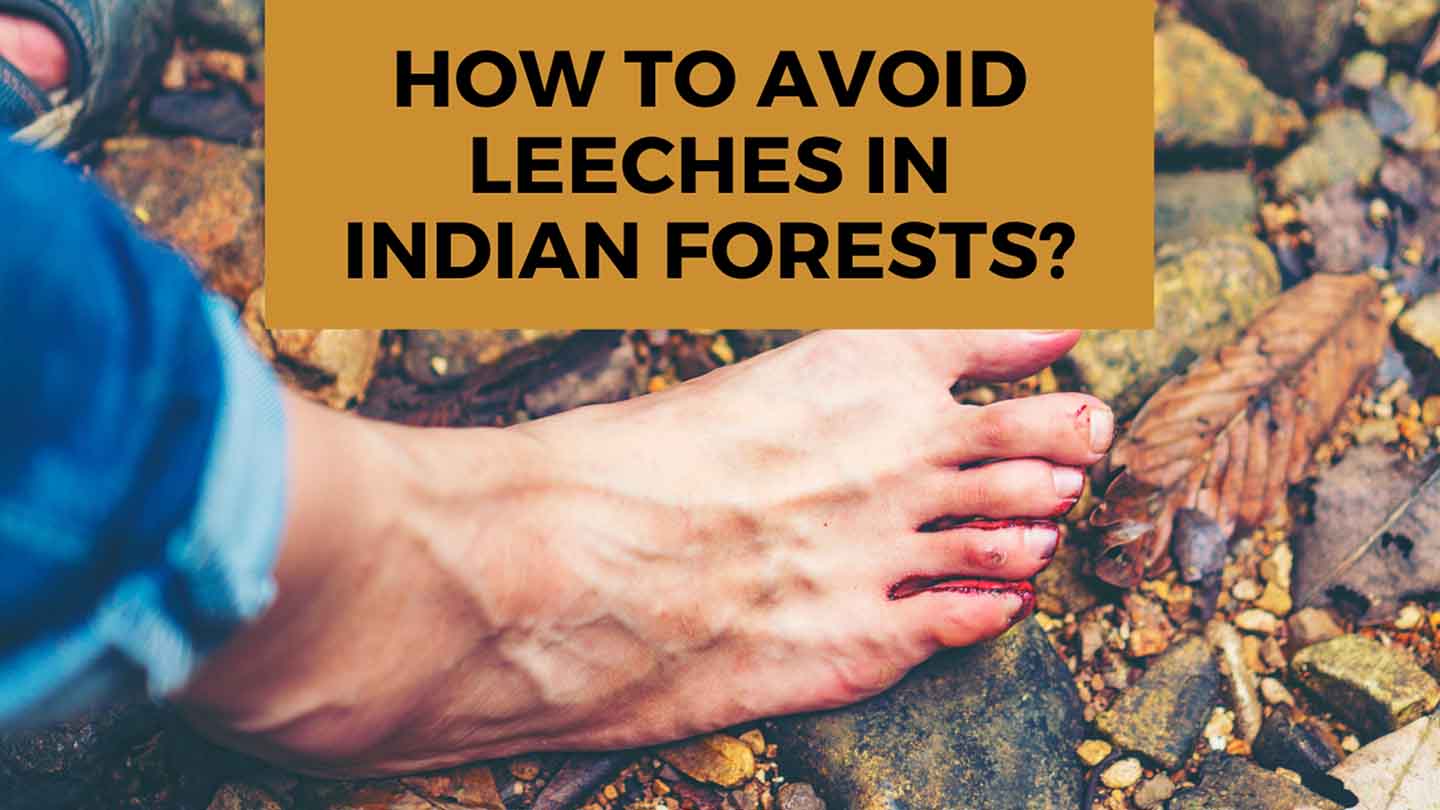How To Manage Leeches In Indian Forests?

- April 6, 2023
- admin
- 8:15 am
A Survival Guide for Birdwatchers and Wildlife Explorers
Encountering leeches is often a part of the thrill and excitement of exploring new territories for birdwatchers and wildlife explorers in India. However, bleeding from the wound for an extended period may scare some people. Leech bites can be itchy but rarely necessitate medical attention. This blog will discuss leeches in India, including their types, habitats, bites, precautions, and remedies.
Leeches are segmented invertebrates belonging to the phylum Annelida, which includes earthworms and marine worms. They are known for their ability to glue and stick to the skin of humans and animals and feed on their blood. Many traditional medicine practices have been using Leeches for ages as they contain anticoagulant compounds that prevent blood clots and improve circulation. However, leech bites can be painful, cause bleeding, and rarely lead to infections.
How Many Types of Leeches Are Found in India?
There are about 80 species of leeches found in India. The most common types of leeches found in India are:
1. The medicinal leech (Hirudinaria manillensis).
2. The tiger leech (Haemadipsa zeylanica).
3. The Indian land leech (Haemadipsa picta).
Each of these leeches has its characteristics, habitats, and feeding preferences.
Leeches are found mainly in humid and moist forests, especially in rainy seasons. However, some species are also found in freshwater rivers and lakes. Leeches are commonly found in India’s and Northeastern regions and Western & Eastern Ghats forests. They are most active during monsoon, the heavy rainy season, from June to September. A monsoon is a time of high humidity and moisture levels, a perfect climate for leeches.
Which are the Most Leech-Infected Forest Areas in India?
The Western and Eastern Ghats are south India’s two mountain ranges with the highest leech infestation rates. These areas are known for their dense forested areas, high humidity levels, frequent rainfall etc. All these factors favour leech growth. In addition, these areas are home to well-known leech-infested birdwatching and wildlife exploration destinations, including Munnar, Thattekkad, Periyar, Wayanad, Coorg, and Yercaud. Northeastern states in India are also known for many leech species and leech-infected wildlife watching zones.
How Does a Leech Bite Feel? Are Leech Bites Dangerous?
A leech bite can feel like a sharp prick or a burning sensation, followed by a numbing or itching feeling.
Leech bites the skin and punctures it with its razor-sharp, microscopic teeth before secreting an anticoagulant enzyme that stops blood clotting. Leech then feeds on the blood, using its muscular pharynx to create suction and extract as much blood as possible. Leech bites typically have no adverse effects, but occasionally, especially when the wound is not properly cleaned and treated, they can sometimes become infections or allergic reactions.
What are the Precautions You can take against Leech Bites?
1) Please wear appropriate clothing: Leeches are less likely to attach if your clothing covers your skin. It is essential to wear long sleeves and skin-protective pants and tuck your pants into your socks or boots to keep leeches from climbing up your legs.
2)Please wear leech socks: Leech socks are standard gear for birdwatchers and wildlife explorers in leech-infested areas. Made of tightly woven fabric that covers the entire foot and leg, they prevent leeches from crawling up your legs. To apply leech socks, pull them up over your pants and tuck the top under your shirt for a secure fit.
3) Regularly spray salt over your shoes and pants while in a leech-infected area. Salt can put leeches in panic mode, making them immediately detach from your body and try to run away. Salt can also kill leeches, so they will not come near you if it is applied to the bottom parts of your clothes.
This is my preferred means of repelling leeches in Indian forests. It aways works for me.
4)Use insect repellent: One chemical way of repelling leech is by applying repellents containing DEET or citronella to exposed skin. This can help keep leeches away and reduce the likelihood of a bite.
5)Avoid dense vegetation and standing water: Leeches are likelier to be present in lush vegetation and standing water. So, please don’t walk through these areas.
6) Tobacco is injurious to leech’s health: It has also been noticed that tobacco powder or a solution mixed with soap water can effectively keep leeches away.
7)Check yourself regularly: Regularly check your body and clothes for leeches, especially in areas where they are known to be present. If you find a leech, remove it immediately using salt, soap, or a leech removal tool. If you get bitten by a leech, please refrain from pulling it out forcefully. If you try to pluck them out, the leech’s tiny teeth may stay in your skin. It may result in swelling, itchiness, and, rarely, an infection. The best remedy is to spray salt on them. Or alternatively, carefully slide a flat object, like a fingernail, under the leech’s mouth and slowly lift it away from your skin.
8) Use natural remedies for bites: If you do get bitten many times, some natural remedies can help reduce bleeding and itching and prevent infection. However, the most worrying factor can be persistent bleeding for some time. The ideal way to handle leech bite is to clean the wound with soap and clean water and apply some natural antiseptic like turmeric, neem oil or honey.
When to Seek Medical Help?
Leech bites are typically not dangerous, and it is a nuisance. It is recommended to seek medical attention if the bleeding was not stopping even after 3o minutes and feeling any sign of infection.
While encountering leeches is common when exploring the wet forests in India, taking proper precautions and knowing how to handle them can minimise the risk of bites. Take the necessary precautions to protect yourself from leech bites so that you can enjoy your adventures worry-free. Keep birdwatching and enjoy wildlife exploring!
